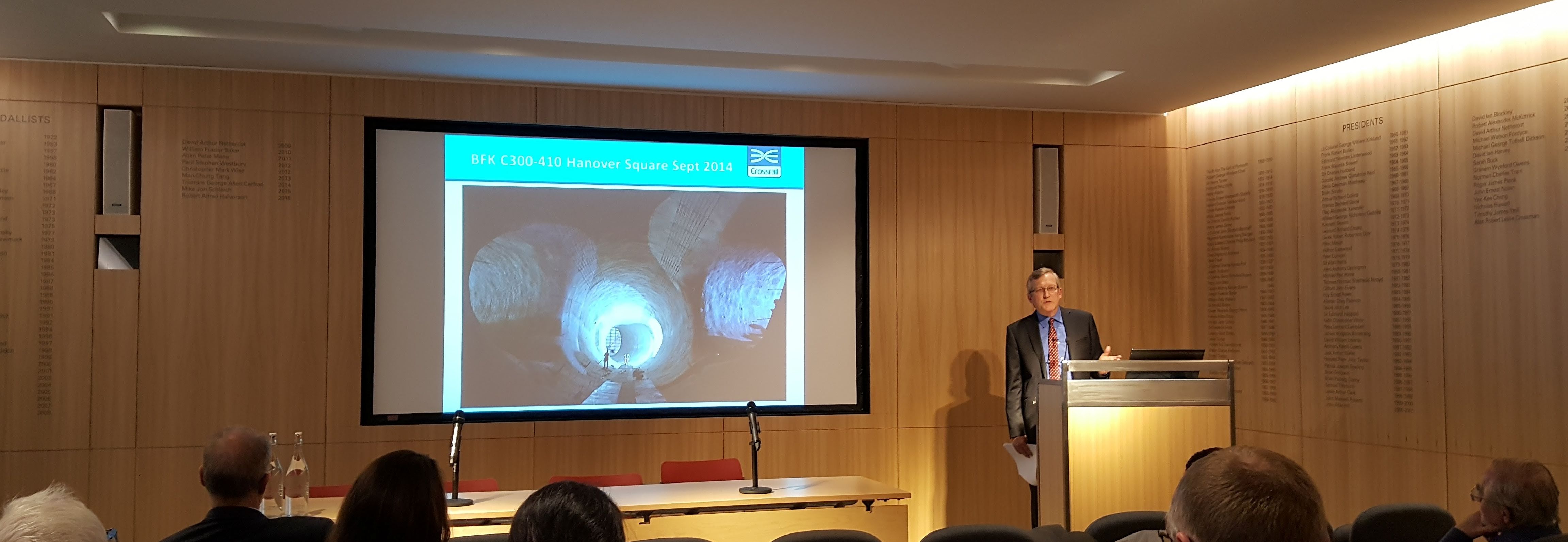When you have been responsible for infrastructure and utilities for the London Olympic Park and are Crossrail’s Programme Director you have a few things to say about the successful delivery of large infrastructure projects. Simon Wright OBE did just that when he took a full lecture theatre at IStructE’s headquarters in Bastwick Street through the key features of Crossrail, how technology has been built into what he terms “the first digital railway” and lessons he has learnt on major programmes.

First, Simon took the audience through what Crossrail is (and what it is not). It is a high capacity, high frequency rail service, building in improved convenience and connectivity. The project costs £14.8bn but is said to deliver £41bn net benefit, by conservative estimates. The project covers 85 miles, 26 of which are new tunnels, featuring 40 stations, 10 of which are new. These were a few of the whopping statistics calmly presented by Simon. It is these statistics that have led the delivery team at Crossrail to call it Europe’s largest construction project. Though Simon is not quite sure how that has been measured and admits they have “Stopped doing it now”!
Perhaps the most impressive thing that could be said about Crossrail, is that it could be said to be the first “Digital Railway”. The systems and technology built into the railway will allow 24 trains to run per hour and the trains could indeed be driverless; although Simon adds that they will not likely be, not least due to the concerns of the train drivers union. Simon hastens to point out that Crossrail’s claim owes a lot more than clever signalling. The stations and rolling stock will have dozens of sensors and monitors to allow smart cost effective operation of the railway. For instance, the trains will be fitted with devices that can continually monitor energy and performance. They can even monitor the condition of the track, dramatically cutting down on the amount of trackside man hours required. Instead of preventative maintenance, railways assets can be controlled through a centralised condition database and trends can emerge and be acted on such as the automatic ordering of spare parts when needed.
Simon ended with his opinions on how to successfully deliver large infrastructure schemes. Simon is a strong proponent of the use of an autonomous arm’s length independent organisation such as the Olympic Delivery Authority. He believes that an organisation that is independent of government/business can provide the opportunity for high performance and can create a culture that that underpins the values that matter. He believes in strong senior leadership with clear vision and objectives. Lastly, to gain trust and improve relationships with key stakeholders, you must always “Do what you say”.
The history of the Annual Lecture can be found here. The Annual Lecture Dinner was held after at the Modern Pantry in Clerkenwell.
Ed Dablin, IABSE British Group Executive Committee Member and Senior Engineer at Tony Gee & Partners.

